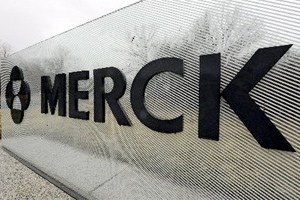 Merck & Co has announced another round of staff cuts as it tries to trim $2.5bn off its annual costs by 2015, with much of the impact felt by the firm’s R&D operations.
Merck & Co has announced another round of staff cuts as it tries to trim $2.5bn off its annual costs by 2015, with much of the impact felt by the firm’s R&D operations.
The US drugs giant has been criticised by investors for poor R&D productivity – despite one of the highest spends in the pharma sector – and recently-appointed research chief Roger Perlmutter has been promising changes since taking the helm in April.
All told, the latest round of job cuts plus previously announced reductions of approximately 7,500 jobs account for around 20 per cent of Merck’s total workforce, at a cost of somewhere between $2.5bn and $3.0bn with around $1bn booked in 2013.
Around half the job losses will come from R&D functions – which have been ring-fenced by Merck for years – with the remainder from admin, sales and some manufacturing operations.
Aside from the staff cutbacks, Merck will bring a halt to a number of late-stage projects that are unlikely to become significant earners in a bid to boost the efficiency of its R&D pipeline. It intends to focus on a more select group of candidates with “unambiguous, promotable advantages to patients and payers”, and hopes to out-license the discards.
Priority projects include MK-3475, its investigational anti-PD-1 immunotherapy for cancer, which will now have its own dedicated business unit, as well as MK-8931 for Alzheimer’s disease, human papillomavirus vaccine V503 and its portfolio of hepatitis C virus drugs.
There are a number of other changes in R&D strategy, including a greater focus on biologics, alongside a pledge to develop new drugs “independent of therapeutic area or modality”, and greater emphasis on sourcing programmes from outside the company.
The company has been criticised for being too slow to embrace the bio revolution and for relying too much on internal R&D at a time when there is a shift across the industry towards a more collaborative approach with other stakeholders.
Despite the sweeping changes, chief executive Kenneth Frazier insisted the revamp was “not a change in our strategy”; rather it was “all about greater focus and generating greater operational efficiencies”.
Frazier added that the measures were in response to a range of factors, including “slowing growth in key markets, research disappointments and regulatory delays”.
Recent setbacks in Merck’s late-stage pipeline include a delay in US approval of anaesthesia drug Bridion (sugammadex) and an FDA rejection for insomnia candidate suvorexant, while the company has experienced a slowdown in sales growth for its key Januvia (sitagliptin) diabetes franchise.
The moves appeared to be well received by investors, with Merck’s stock rising more than 2 per cent yesterday.
About-turn on HQ plans
Merck has also changed its earlier plan to move its New Jersey headquarters from Whitehouse Station to Summit, but now says it will close both these sites and consolidate all operations at its campus in Kenilworth, which is one of its primary R&D units.
Summit currently houses animal health and consumer care units that will be transferred elsewhere in New Jersey.




